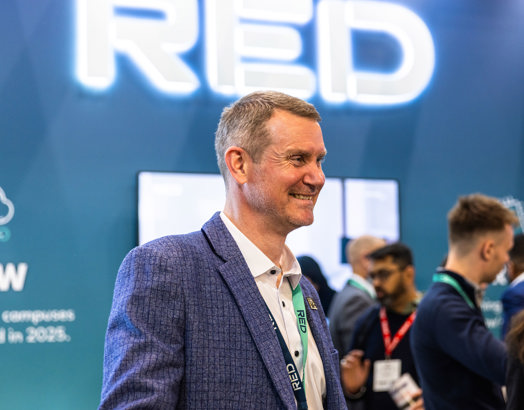
01 Dec 2021
5 minutes to read
Data Centre Design helping the customer meet tomorrow’s ICT climate change targets.
We are driving down energy consumption and carbon emissions in ICT networks and removing non-environmentally friendly waste from the technology systems supply chain.
This matters to our customers because we take a responsibility to deliver a more sustainable solution and help clients meet their own climate change targets. This approach will increase efficiency and productivity, resulting in better relations with their community.
We’ve listened to our customers and in response to their ambitions, we are actively delivering lower carbon ICT solutions.
RED ICT Director Phil Beale said; “By adopting a challenging approach to traditional ICT design methods, we are finding an increasing number of opportunities to reduce harmful effects that contribute to global warming, including;
- Identifying and reducing construction materials likely to end-up in landfill
- Partnering with contractors to reduce; single-use plastic, polymers and PCB waste
- Influencing suppliers to adopt and implement more sustainable practices
Because climate change is a critical global issue it is best tackled through unified effort.
Through collaboration we assess the technical architecture and operational practices from a whole project life-cycle perspective. Digging deeper into the layers of the ICT infrastructure can reveal surprising opportunities to optimise resources, such as; reducing embodied carbon in ICT equipment installations, optimise electrical & mechanical systems, frequency of system renewals and material disposal strategies.”
The RED ICT methodology can unlock the potential to deliver a more sustainable outcome.
RED ICT Lead Sustainability Consultant, Syed Hussain said: “Our strategy, helps accelerate the customers pathway towards net zero carbon. Adopting a scalable Data Centre power grid reference model, our carbon emissions calculator enables us to estimate the embodied and operational carbon of the building depending on the location and the future forecast of utilities’ decarbonisation.
We are committed to establishing circular economy based solutions wherever the opportunities arise. Our methodology provides template examples that can be applied to a wide range of product categories.
In 2019, 53.6 million metric tonnes of e-waste was generated worldwide. End-of-life management of ICT equipment presents an opportunity to significantly reduce e-waste generation. Our strategy enables us to assess and analyse the environmental impact across all stages of product development, this includes; the assessment of raw materials, the type of energy used to process those raw materials and the end product.
We also consider; the type of packaging, physical distribution methods and construction site practices. Specific targets include the reduction of plastic waste and increase of 100% biodegradable materials used for packaging”
The RED ICT design standards include a reference model to help guide our customers through a sustainable design process.
RED Head of Sustainability Solutions & Climate Change, Iain MacDougall explains; “Sustainability is a universal requirement for the success of life on earth. As a species this is largely recognised. As such, the global society is undergoing a deeply disruptive and absolutely necessary realignment away from our industrial harvesting of the earths resource to a 100% sustainable harmonic steward ship of the Earth.
The infrastructure, upon which this realignment is based is increasingly electronic in nature. Therefore, our IT infrastructure is to a great extent one of the foundations upon which we will build our sustainable culture.”
Learn more about RED ICT, Contact Us today.
Latest Insights
View all insights






